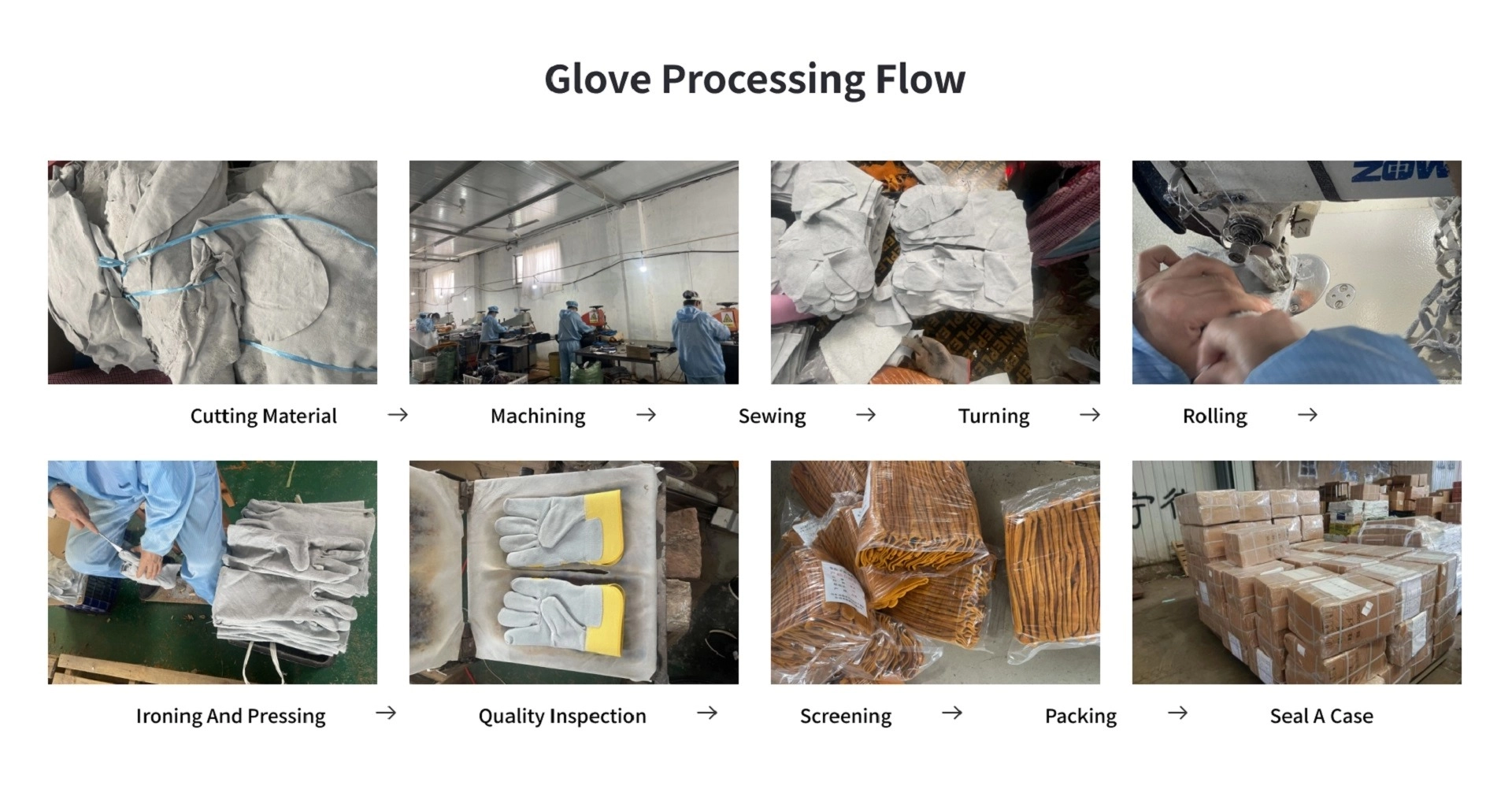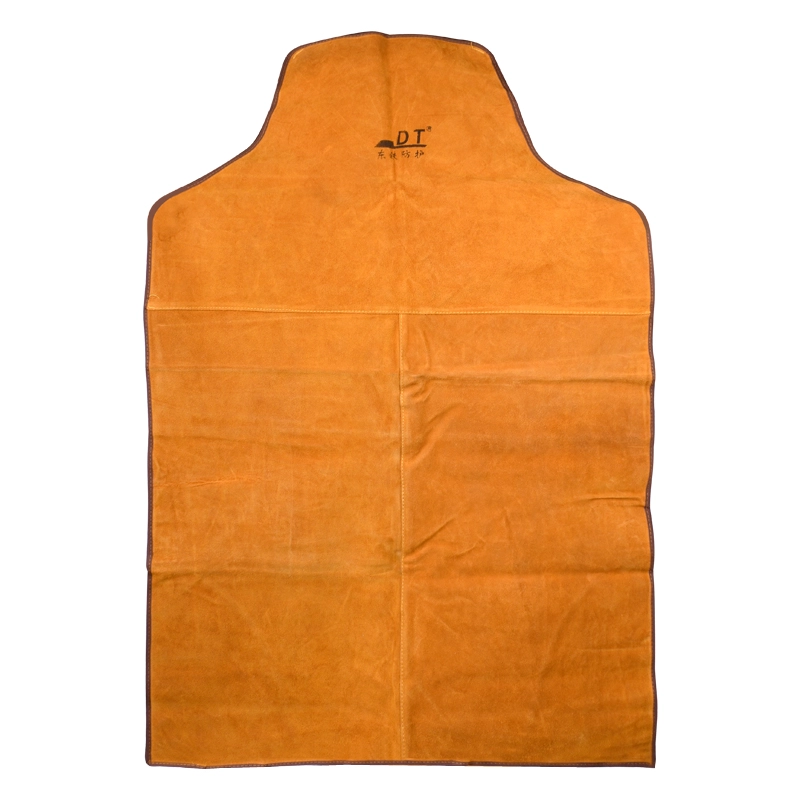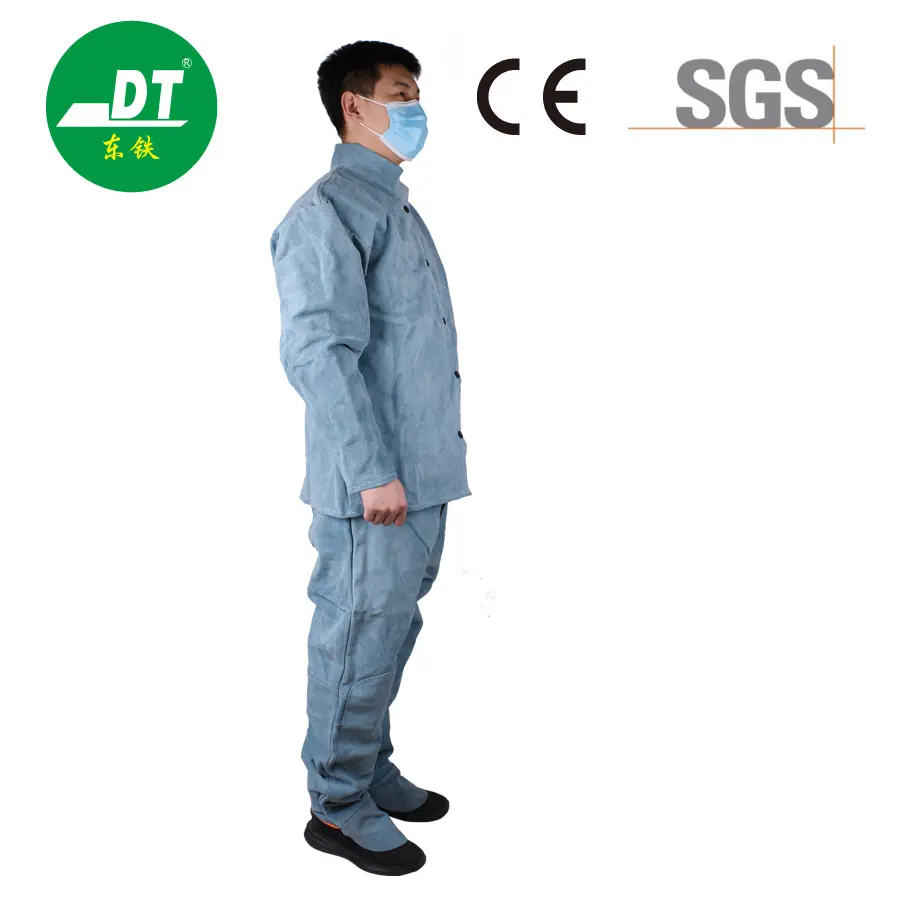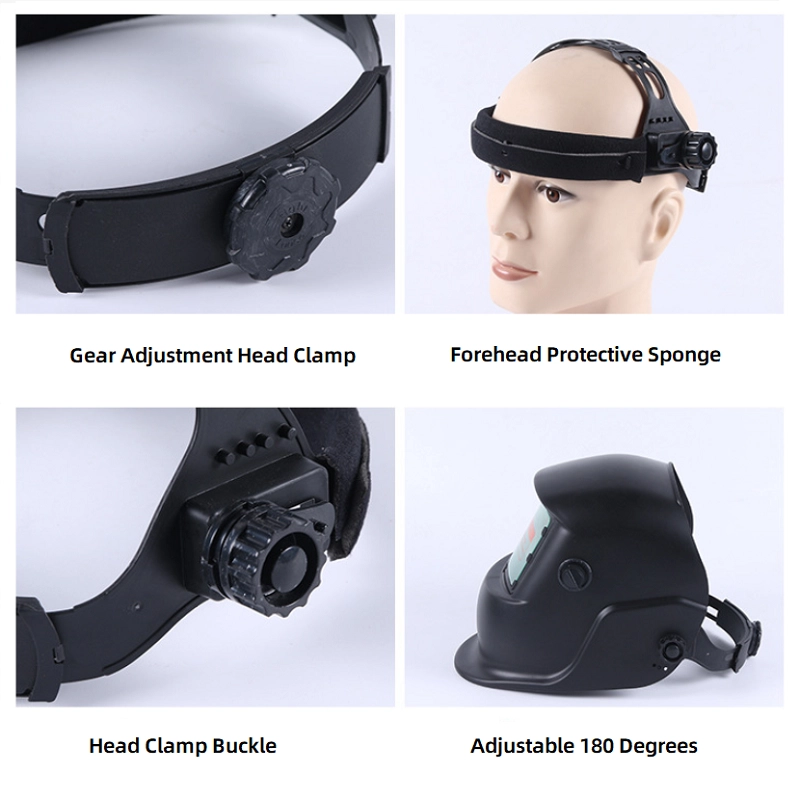Essential Welding Safety Rules: Your Ultimate Guide to a Safer Weld Shop
As a manufacturer of protective equipment for decades, I've seen the good, the bad, and the ugly when it comes to welding safety. The difference often comes down to knowledge and preparation. A weld is a powerful tool that fuses metal, but it also creates significant hazards. This guide is designed to be your comprehensive resource for understanding and mitigating those risks. Whether you're a procurement officer like my typical customer, Mark Thompson, who needs to ensure the safety of an entire team, or an individual welder looking to reinforce your own practices, this article is for you. We will cover everything from the non-negotiable personal protective equipment (PPE) to creating a fire-safe work area and understanding the invisible dangers of fumes. Reading this will not only help you comply with safety standards but will actively help protect welders and improve overall efficiency in your welding workshop.
Why is Welding Safety So Crucial in the Industry?
The importance of welding across construction, manufacturing, and repair is undeniable. However, this essential process comes with inherent risks. Ignoring welding safety isn't just a compliance issue; it's a direct threat to life and limb. Each year, thousands of workers suffer from injuries related to welding operations. The U.S. Bureau of Labor Statistics reports that over 500,000 workers are exposed to welding hazards annually. These aren't just minor scrapes; we're talking about severe burns from sparks and spatter, permanent eye damage from ultraviolet and infrared radiation, and chronic respiratory diseases from inhaling toxic fumes. A single spark can ignite a catastrophic fire if it lands on flammable material.
Beyond the immediate physical hazard, poor safety practices have a ripple effect. A workplace injury leads to downtime, increased insurance premiums, and potential fines from bodies like the Occupational Safety and Health Administration (OSHA). More importantly, it damages morale. A strong culture of safety demonstrates that a company values its people above all else. When a welder feels safe, they can focus on their craft, leading to higher quality work and greater productivity. Therefore, prioritizing welding safety is a foundational pillar of a successful and responsible welding industry operation.
What Personal Protective Equipment (PPE) is Non-Negotiable for Any Welder?
There is no substitute for proper personal protective equipment (PPE). It is the first and most critical line of defense between a welder and the intense energy of the weld. As a manufacturer, I can't stress this enough: the quality of your safety gear matters. Cutting corners here is a gamble you can't afford to take. Every welder must be outfitted from head to toe before striking an arc. This isn't just a recommendation; it's a fundamental requirement for safe work.
Here is a breakdown of the essential gear:
- Eye and Face Protection: A high-quality welding helmet or welding hood is paramount. It must have a filter lens with the correct shade number for the specific type of weld being performed. This protects against the brilliant light and the invisible but damaging welding arc’s rays. Underneath the helmet, every welder must also wear approved safety glasses with side shields. This protects the eyes from flying debris when the helmet is lifted.
- Hand and Arm Protection: Durable, flame-resistant clothing and gloves are a must. The type of glove depends on the welding application. For example, TIG welding requires more dexterity, while Stick or MIG welding demands heavy-duty heat resistance. We produce a wide range of options, including Heat&Flame Resistant Arm Protection Leather Welding Sleeves, to provide complete arm coverage against sparks and UV radiation.
- Body Protection: A welding jacket or a heavy-duty leather apron protects the torso from heat and sparks. Wool or treated cotton are also acceptable materials, but never synthetic fabrics like polyester, which can melt and cause severe burns.
- Foot Protection: Steel-toed leather boots are the standard. They protect against falling objects and sparks that can collect in regular shoes. For extra protection, cowhide foot covers can be worn over boots.

How Do You Choose the Right Welding Gloves for the Job?
Not all welding gloves are created equal. The choice of glove is a critical decision that directly impacts both safety and the quality of the weld. The primary factors to consider are the welding process, the amperage involved, and the required dexterity. Using the wrong glove can lead to burns or a lack of control, both of which are serious safety hazards. As a one-stop work gear provider, we often guide our clients through this selection process to ensure they get the perfect fit for their needs. A welder performing a delicate TIG weld on thin aluminum needs a glove that offers excellent feel and control, while a welder doing heavy structural stick welding needs maximum heat insulation.
Here's a simple table to guide your choice:
| Welding Process | Common Materials | Key Features | Recommended Product |
|---|---|---|---|
| Stick (SMAW) | Heavy-duty cowhide, often lined | High heat resistance, durability, full coverage | 14'' Red Color Cowhide Welding Gloves |
| MIG (GMAW) | Split or top-grain cowhide | Good heat resistance, moderate dexterity | 14" Black and Golden Yellow Cowhide Gloves |
| TIG (GTAW) | Goatskin, deerskin | Excellent dexterity, good tactile feedback | 14" Black and White Cowhide Sheepskin Gloves |
| High-Temp | Aramid, Aluminum Foil | Extreme heat reflection, for foundry or furnace work | High Temperature Resistant Gloves |
Ultimately, the right glove should provide protection without unnecessarily hindering the work. Always inspect your gloves for holes or damage before starting to weld. A small hole can easily lead to a nasty burn. Investing in quality gloves that meet or exceed safety standards like CE or ANSI is one of the smartest decisions you can make to improve welding safety.
What are the Dangers of Welding Fumes and Gases, and How Can We Mitigate Them?
One of the most insidious welding hazards is one you can't always see: welding fumes and gases. The intense heat of the weld vaporizes the base metal, filler metal, and any coatings on the surface. As this vapor cools, it condenses into extremely fine solid particles, creating welding fumes. These particles, along with gases like ozone and nitrogen oxides generated by the arc, pose health hazards. The specific chemical makeup of the fume depends on the materials being used, but many contain dangerous substances like manganese, chromium, and lead.
The health and safety effects of exposure can be immediate or long-term. Short-term exposure can cause "metal fume fever," with flu-like symptoms such as dizziness, nausea, and fever. However, the long-term consequences are far more severe. Chronic exposure to certain welding fumes is linked to serious health problems, including lung, larynx, and urinary tract cancer, as well as nervous system damage. This is why proper ventilation is not optional; it's a lifeline. The primary method of control should always be engineering controls, such as local exhaust ventilation (LEV) systems that capture the fume at the source. In situations where ventilation is insufficient, such as welding in confined spaces, a certified respirator is absolutely essential to protect the welder.

How Can You Prevent Fires and Explosions in the Welding Area?
Welding fires and explosions are among the most common and devastating incidents in a welding workshop. The weld itself produces extremely high temperatures, and the process sends a shower of sparks and molten metal spatter in all directions. According to the National Fire Protection Association (NFPA), cutting and welding are a leading cause of industrial fires. The key to fire safety is understanding and controlling the fire triangle: heat (the arc/flame), fuel (combustible materials), and oxygen (the air around us). Your job is to eliminate the fuel from the equation.
Before beginning any welding and cutting task, the welding area must be thoroughly inspected and prepared. A good rule of thumb is to clear all combustible materials—such as wood, paper, cardboard, rags, and flammable liquids—within a radius of 35 feet from the weld. If combustibles can't be moved, they must be covered with fire-resistant blankets. Check for cracks in floors or walls where a spark could fall and smolder unnoticed. Always have a designated "fire watch" person present during and for at least 30 minutes after the welding work is complete. Most importantly, ensure that appropriate fire extinguishers are nearby, fully charged, and that the welder knows how to use them. These simple safety precautions can prevent a small spark from becoming a major disaster.
What Steps Should You Take to Inspect Your Welding Equipment and Workspace?
A safe weld begins long before the arc is struck. It starts with a thorough inspection of your tools and working environment. Using faulty welding equipment is a significant safety violation that can lead to electric shock, fires, or poor-quality welds that fail under stress. It is crucial to inspect all equipment before each use to ensure it is in good working condition. Create a simple checklist and make it a routine part of your setup process.
Your pre-weld inspection should include:
- Cables and Hoses: Look for any cracks, cuts, or frayed areas in the insulation of your welding and ground cables. A damaged cable is a serious electric shock hazard. Ensure all connections are tight and clean. For gas welding, check hoses for leaks using a soapy water solution.
- Electrode Holder and Torches: Make sure the insulation on the holder is intact and that the jaws hold the electrode securely. For MIG or TIG torches, check that the trigger and gas nozzles are functioning correctly.
- Workspace: A cluttered workspace is a trip-and-fall hazard. Keep the floor clear of cables, tools, and scrap metal. The area should be clean, dry, and well-lit. An organized work area not only improves safety but also efficiency. Making sure your equipment is in good working order is a fundamental aspect of professional welding skills.
Are There Specific Safety Rules for Different Welding and Cutting Processes?
While many welding safety rules are universal, different welding and cutting processes present unique challenges. Understanding these specifics allows a welder to tailor their safety precautions for maximum effectiveness. A one-size-fits-all approach to welding safety can leave dangerous gaps. For example, the primary risks in arc welding are different from those in oxy-fuel cutting.
For arc welding (Stick, MIG, TIG), the primary concerns are electrical shock and radiation. Exposure to a welding arc’s intense ultraviolet (UV) and infrared (IR) light can cause "arc eye" or "welder's flash," a painful condition similar to a sunburn on the cornea. This is why a proper welding helmet and full skin coverage are so vital. Electrical shock is another major risk. Always wear dry gloves, keep your body insulated from the workpiece and ground, and never weld in damp conditions.
For oxy-fuel welding and cutting, the main hazard involves the handling of high-pressure gas cylinders. These cylinders must be stored upright, secured with a chain to prevent them from falling, and kept away from heat sources. Never use oil or grease on cylinder valves or regulators, as it can react violently with pure oxygen. A "flashback"—where the flame burns back into the torch and hoses—is a serious risk, which is why flashback arrestors should always be installed on the regulators. Recognizing the distinct requirements for welding with different methods is a hallmark of a seasoned professional.

What are the Ergonomic Hazards in Welding and How Can We Avoid Them?
When we discuss welding hazards, we often focus on the immediate dangers of burns, shocks, and fumes. However, the physical strain of welding work can lead to long-term ergonomic injuries. A welder often has to hold awkward positions for extended periods, repeatedly lift heavy materials, and deal with vibration from tools. Over time, this can lead to musculoskeletal disorders (MSDs) like back pain, carpal tunnel syndrome, and tendonitis. These repetitive stress injuries can be just as debilitating as an acute injury.
Fortunately, there are many ways to avoid repetitive stress injuries. The goal is to make the work habits fit the worker, not the other way around.
- Positioning: Use adjustable tables, jigs, and positioners to bring the weld to a comfortable height and angle. This minimizes the need to bend, stoop, or reach.
- Lifting: Employ safe lifting techniques—bend at the knees, not the waist—and use mechanical aids like cranes, hoists, or dollies for heavy items.
- Anti-Fatigue Measures: Standing on anti-fatigue mats can reduce strain on the legs and back.
- Take Breaks: Encourage frequent short breaks to stretch and change positions. This helps relieve muscle tension and improves circulation.
By paying attention to ergonomics, companies can protect their workers from chronic pain and ensure a longer, healthier career for every welder.
How Can a Company Foster a Culture of Welding Health and Safety?
True welding health and safety isn't just a list of rules in a binder; it's a culture that is lived and breathed every day in the workshop. Creating this safe work environment is a shared responsibility, but it must be led from the top down. When company owners and managers demonstrate a genuine commitment to safety, employees are far more likely to incorporate safety into daily work habits. This culture is built on a foundation of training, communication, and accountability.
To build a strong safety culture, you should:
- Provide Comprehensive Training: Don't assume everyone knows the rules. Regular, hands-on training on safety regulations, equipment use, and emergency procedures is essential. Stay updated on safety standards from organizations like OSHA and the American Welding Society.
- Communicate Openly: Hold regular safety meetings or "toolbox talks." Encourage workers to report safety concerns or near-misses without fear of reprisal. This valuable feedback can help you identify and fix a hazard before it causes an injury.
- Lead by Example: Managers and supervisors must always follow the same safety guidelines they expect from their team. If a supervisor walks through the shop without safety glasses, it sends the message that the rules are optional.
- Invest in Quality Gear: Providing high-quality, comfortable PPE, like a complete Golden Color AB Grade Cowhide Welding Protective Clothing set, shows that you are invested in your team's well-being. When gear is comfortable and effective, people are more likely to use it correctly.

What are the Key Takeaways and Best Practices for Daily Welding Work?
Mastering the art of a perfect weld is a great achievement, but doing it safely is the true mark of a professional. Essential welding safety is about making conscious, safe choices throughout your day. It’s about building good working habits until they become second nature. To make safety a priority, it helps to have a clear set of principles to guide your actions. These tips and best practices serve as a daily reminder of what it takes to protect welders and maintain a productive shop.
Here are some final tips for welding safely every day. Always read and understand the manufacturer's safety information and safety data sheets for all equipment and materials you use welding. Never become complacent. Even the most experienced welder can get hurt if they stop paying attention. Remember that following safety protocols is not about slowing down; it's about ensuring you can keep working for years to come. The goal is to incorporate safety into daily work so seamlessly that it feels like a natural part of the job. It's the only way to ensure that everyone goes home safe at the end of the day. You need to be safe not just for yourself, but for your coworkers and family.
Key Takeaways for Essential Safety
To wrap up, here are the most critical points to remember for any welding operation:
- Always Wear Your PPE: Your protective equipment is non-negotiable. Ensure your helmet, gloves, jacket, and ear protection are in good working order and appropriate for the task.
- Prepare Your Workspace: Clear all flammable materials from the welding area, at least a 35 feet radius is the standard. Ensure the workspace is clean, dry, and well-ventilated.
- Control the Fumes: The smoke emitted during welding pose a significant health risk. Use proper ventilation, and when in doubt, wear a respirator. Never put your head in the fume plume.
- Inspect, Inspect, Inspect: Before you start to weld, check all your welding equipment, including cables, hoses, and connections. A pre-use check prevents many common accidents.
- Know Your Fire Plan: Have a fire extinguisher nearby and know how to use it. A fire watch is crucial for any major welding job.
- Stay Educated: Safety standards and technologies are always evolving. Continuous learning is key to maintaining a safe work environment. When it comes to following safety guidelines, there is no finish line.






